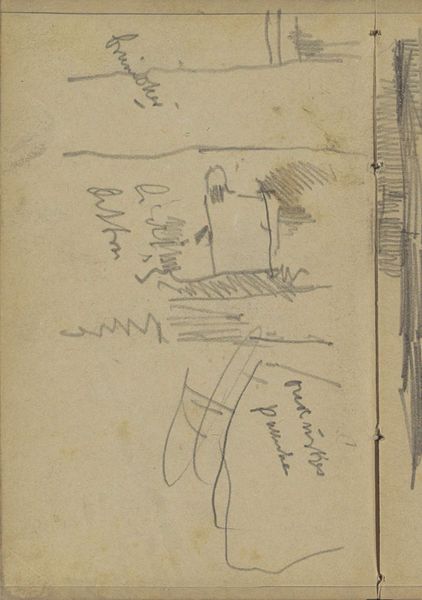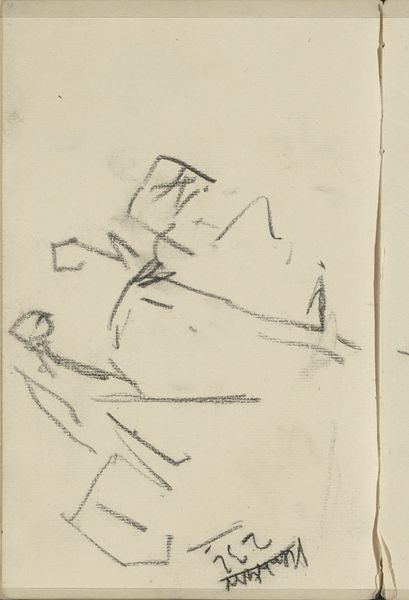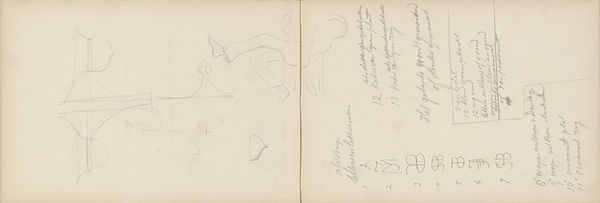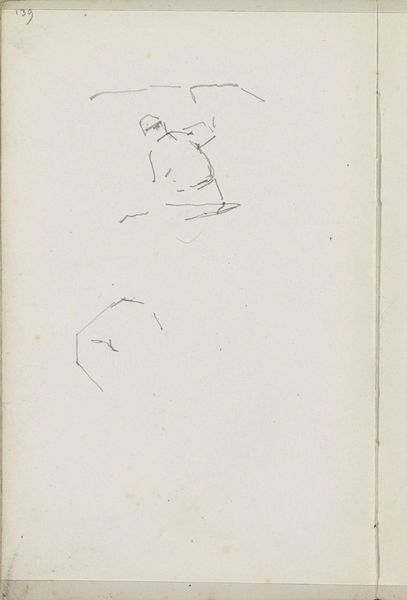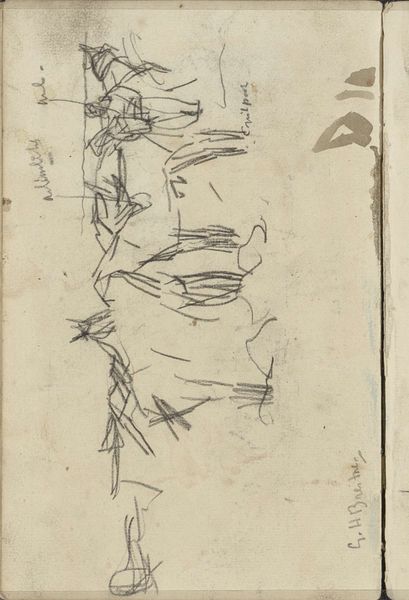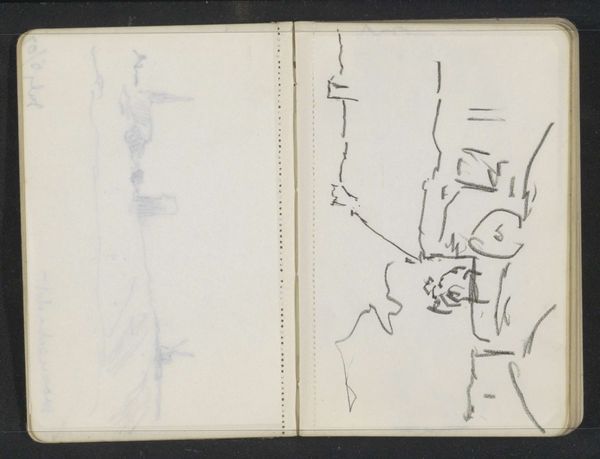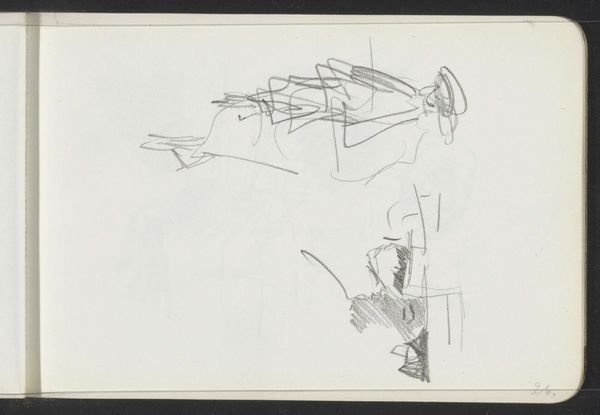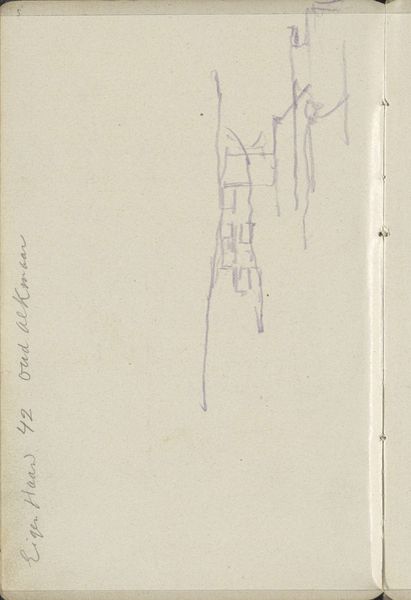
Figuren aan de Prinsengracht te Amsterdam bij avond c. 1893s - 1903s
0:00
0:00
Copyright: Rijks Museum: Open Domain
Curator: Looking at this double-page spread from one of George Hendrik Breitner’s sketchbooks, dating from around 1893 to the early 1900s, what strikes you first? It’s called "Figures on the Prinsengracht in Amsterdam at Night." Editor: There’s a raw, almost haunting energy in the asymmetry—like catching a fleeting memory, not quite focused, but definitely felt. The stark lines and shadows seem to whisper more than they show. Curator: Exactly! The left page is practically empty, just some almost scribbled lines, like hesitations. Then you move right, and Breitner explodes with impressionistic frenzy capturing the ambiance of Amsterdam’s Prinsengracht with vigorous lines that create figures. The pencil seems to dance across the page to capture the mood. It almost reminds me of looking at the world as I hurry between gigs. Editor: The way he builds depth with layers of shadow, that’s intentional. See how he frames the darker elements with those hesitant lines and blocks of shading to bring certain aspects into high contrast, really pulling them forward, creating a visual rhythm. Curator: Right, you feel the weight and bustle of the city without seeing a single polished detail, only ghostly outlines and shadows. It feels very true to how one experiences the place—fleetingly, as if you have just turned away. What a great thing it is, as an artist, to be brave enough to embrace that raw sketchwork! Editor: This kind of sketchbook study is vital. It shows his artistic process—that's him working through seeing as much as just recording something complete, using chiaroscuro effects without high-keyed color to shape a scene, an atmosphere and depth to his art Curator: A place of in-between where his imagination came alive to give the city the mood that still endures in Breitner's most iconic artworks. Thank goodness for the sketchbook, right? Editor: Indeed, the raw energy of the immediate, distilled through observation and translated through rapid line and tone—it gives the viewer insight, revealing something about a certain state of mind in late nineteenth century Amsterdam.
Comments
No comments
Be the first to comment and join the conversation on the ultimate creative platform.

